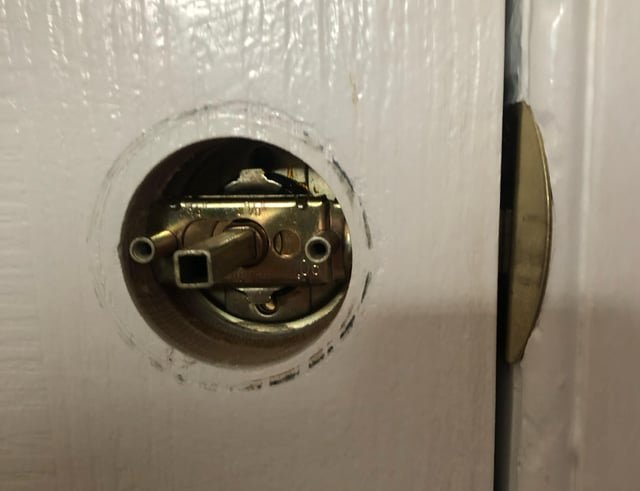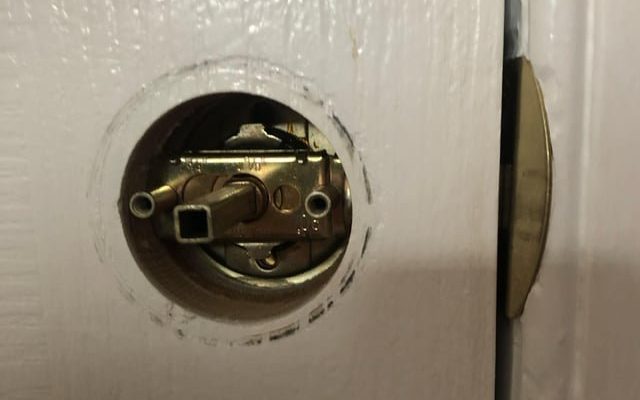
Dealing with a sticking deadlock plunger isn’t as daunting as it sounds, though. It’s like trying to fix a small engine problem—you might feel overwhelmed at first, but with a little guidance, you can usually sort it out. Here’s the thing: knowing how the latch works and what might cause it to stick can save you a lot of time and headache. Whether you have a standard door lock or a more complex smart lock from brands like Schlage or Kwikset, the principles are similar.
Let’s dive into how to troubleshoot this issue and get your door latch back in working order. You’ll find that fixing a sticking deadlock plunger is often simple and can be accomplished mostly with items already at home.
Understanding the Door Latch Mechanism
To fix a sticking deadlock plunger, it’s helpful to first understand what it does. The deadlock plunger is a small mechanism that helps secure your door when locked. Picture it like a little soldier standing guard; it drops down into place when the door is locked, keeping everything secure and safe.
The plunger usually operates through a simple mechanism that connects to your key or a button inside your home. When you turn the key or press the button, the plunger should retract smoothly, allowing you to open the door. However, sometimes, it can become stuck due to dirt, rust, or even a misalignment in the lock. This is when the trouble starts, and you might find yourself jiggling the doorknob in vain.
Here’s how the mechanism works in practice: when you’re locking or unlocking the door, there’s a series of springs and pins that work together. If anything interferes with this process—like grime or lack of lubrication—the plunger can get stuck, preventing the door from opening or closing easily.
Common Reasons for a Sticking Deadlock Plunger
Now that you have a basic understanding of how your door latch works, it’s crucial to identify what might be causing the plunger to stick. Here are some of the most common culprits:
- Dirt and Debris: Over time, dirt and dust can build up inside your lock, causing the plunger to jam. Think of it as a tiny blockage in a pipeline. If you don’t clean it regularly, that blockage can lead to bigger issues.
- Rust: If your door lock is exposed to moisture, rust can form and hinder the movement of the plunger. This is especially common in areas with high humidity or if the lock is outside.
- Lack of Lubrication: Just like a well-oiled machine, door locks need regular lubing to function correctly. If you haven’t lubricated your door lock in a while, it’s like trying to start a car with no oil—it won’t run smoothly.
- Misalignment: If the door or the latch itself is misaligned, it can cause strain on the plunger. It’s similar to trying to fit a square peg in a round hole—eventually, it just won’t work.
Recognizing these issues is the first step toward resolving the sticking plunger problem. Remember, each of these issues is fixable with a bit of know-how and patience.
Step-by-Step Guide to Fixing a Sticking Deadlock Plunger
So, how do you go about fixing that pesky sticking deadlock plunger? Here’s a simple, step-by-step guide to tackle this issue effectively:
Step 1: Gather Your Tools
Before getting started, make sure you have the following items handy:
- A can of compressed air or a vacuum cleaner with a nozzle
- Lock lubricant (graphite powder or silicone spray works best)
- A clean, dry cloth
- Screwdriver (if you need to disassemble the lock)
Having these tools at your fingertips will make the process much smoother.
Step 2: Clean the Lock
Using the compressed air or vacuum, blow out any dust or debris from the lock. If you can access the latch, use the cloth to wipe away any grime around the plunger area. This is similar to decluttering a room—it’s much easier to function in a clean space.
Step 3: Apply Lubrication
Once the lock is clean, it’s time to apply lubricant. Spray a small amount directly into the lock or on the plunger. Be careful not to overdo it; a little goes a long way. The goal here is to reduce friction so the plunger can move freely, like a well-oiled hinge.
Step 4: Test the Lock
After cleaning and lubricating, test your lock to see if the plunger moves smoothly. If it still sticks, you may need to disassemble the lock for a more thorough inspection. Most locks have screws that can be easily removed with a screwdriver.
When to Consider Replacement
Sometimes, despite your best efforts, a sticking deadlock plunger might simply be beyond repair. Here’s when you should consider replacing the entire lock:
- Severe Rust Damage: If the lock has significant rust that cleaning won’t fix, it might be time for a new lock. You don’t want to leave your home vulnerable.
- Frequent Sticking: If you find yourself frequently troubleshooting the same issue, replacement can save you time and frustration in the long run.
- Old Locks: If your lock is old and you frequently have trouble, modern locks often come with better security features and smoother mechanisms.
Replacing a lock isn’t as scary as it sounds. Most come with easy-to-follow instructions, and it’s a great way to ensure your home remains safe and secure.
Comparing Lock Options
If you decide to replace your sticking deadlock plunger lock, it’s worth considering different types of locks. Here’s a quick comparison:
| Type | Pros | Cons |
|---|---|---|
| Standard Deadbolt | Reliable, affordable, widely available | Can be picked if not high-security |
| Smart Lock | Convenient, can be controlled remotely | Higher cost, requires batteries or charging |
| Keyless Entry | No keys needed, easy to use | Can malfunction if batteries die |
Choosing the right lock can enhance your home’s security and ensure you won’t face similar issues in the future.
Final Thoughts
Troubleshooting a door latch’s deadlock plunger that’s sticking doesn’t have to be a headache. With some basic understanding and a little elbow grease, you can often fix the problem yourself. Remember to keep your locks clean and lubricated, and don’t hesitate to replace them if they show signs of significant wear.
By staying proactive about your home’s locks and understanding how they work, you’ll ensure your door remains a reliable barrier against the outside world. And who knows? You might even feel a sense of accomplishment the next time you hear that comforting *click* when locking your door!
